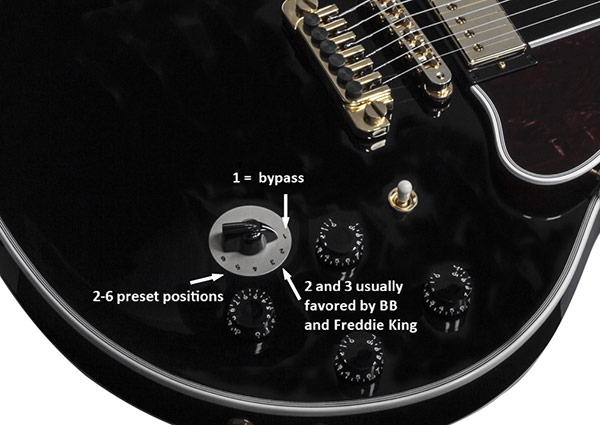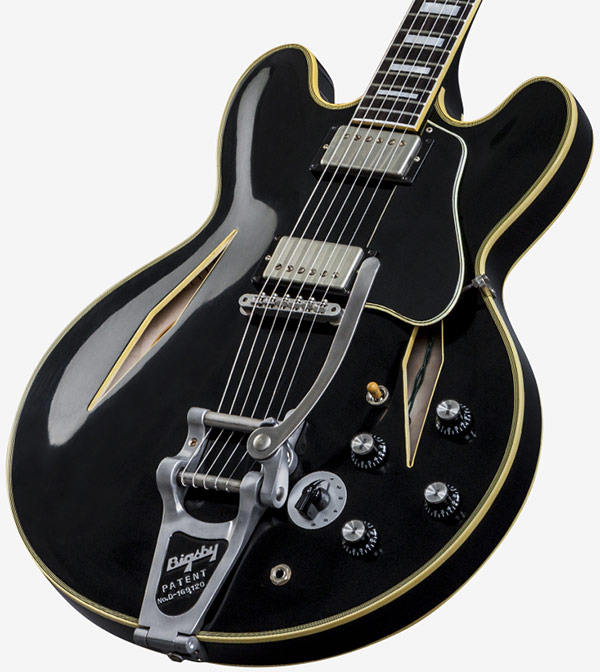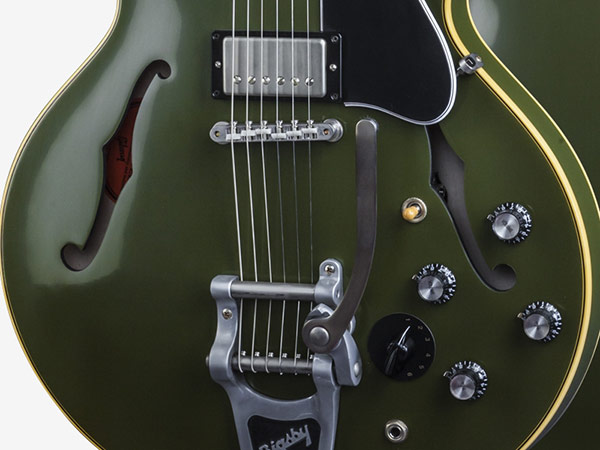
If you’re a fan of Gibson ES-345s and ES-355s you’ll be aware that some models have an extra knob: the Varitone.
Even nearly 60 years after it debuted, there’s a lot of misunderstanding about what the Varitone switch does. Just a quick look at guitar forums and you’ll see phrases like “Sucks tone”,“Kills sustain”,“ruins fat jazz tone”... Huh? It’s quite easy to debunk such myths, but first it’s best to understand what the Varitone actually is.

What the Varitone Is
Although a rotary design like a so-called “pot,” Gibson calls it the Varitone “switch.” Below the chicken-head knob lies a notch filter with six separate capacitors soldered to switch decks. The first position (1 on the dial) is true bypass, allowing the signal to go straight to the volume pot from the pickup, with no resistors or capacitors in the way. The other five steps on the switch remove certain frequency ranges, offering EQ “maps” that are set.
So unlike the regular passive tone pots elsewhere on your guitar, the Varitone doesn’t act as a low-pass filter, it’s effectively a notch filter. It takes preset slices out of the midrange. The result is a selection of tones that are increasingly more “nasal” than their full-fat bypass equivalents. If you’re into the science:
- A 1.5H choke is housed beneath the treble pickup and it fixes the range of the notch.
- Position 1 on the Varitone switch is the bypass.
- Positions 2-6 traditionally cycle through 1000pF, 3000pF, 0.01μF, 0.03μF, and 0.22μF capacitors.
- Each cap is paired with a 10M resistor to avoid “pops” when you’re switching from position to position.
Perhaps there’s so much confusion as none of the switch’s positions have ever had names: so you’ll get various people using terms like “squishy”, “underwater” or “transistor radio” sound.
The exact frequency slices taken out at each step vary – some say ‘70s produced models have notably different sounding circuits – but the basic idea remains the same: the Varitone allows for pre-set frequency “maps” that you can dial in with the flip of a switch.

What the Varitone Isn’t
Although a lot of people also use the phrase “compression” when it comes to the Varitone, the Varitone circuit is not a compressor. But nor is it “just another tone knob” or even (I’ve seen it written!) “something like a wah pedal”.
- In position 1, the Varitone is true bypass (or as close as possible) so it cannot “suck tone”.
- Positions 2-6, it does “take out” a range of frequencies. If that is “sucking tone”... well, that’s exactly the point.
And remember, you still have your usual two volume and two-tone pots to bring into play. Plus, of course, your 3-way pickup selector. Due to the nature of circuits, you inevitably will see a change in volume on Varitone positions 2 to 6, but that’s why your guitar has a volume control. It doesn’t have to be on 10 all the time.
Maybe the Varitone just destined to be misunderstood forever. What we can say is that, in particular, some classic B.B. King and Freddie King tones need a Varitone switch-equipped ES. You’ll still get some players who have a (non-Varitone) ES-335 but say they can’t get the inimitable honk of B.B.’s “The Thrill Is Gone.” Have they tried a Varitone 345 or 355? “No,” they say, “Varitones ruin your sound...” Go figure. Suffice to say, B.B. King called the Varitone “the magic switch.”

The Varitone isn’t for everyone, that’s true. It is a “period” feature. But it’s definitely worth trying an ES-345 or 355 with one. You’ll find the Varitone on:
1964 Gibson ES-345 Mono Varitone (in white)
1964 ES-345 Olive Drab Green Bigsby Mono Varitone (Drab olive green)






